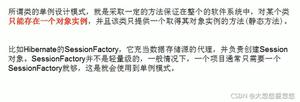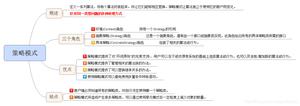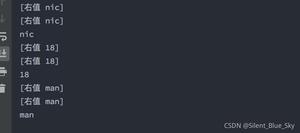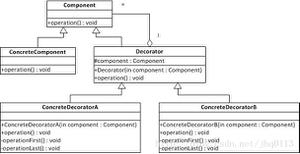设计模式(9)装饰模式

- 装饰模式
- 装饰模式的特点
- 动态撤销功能
装饰模式可以动态向一个现有的对象添加新的功能,同时又不改变其结构。就增加功能来说,使用继承的方式生成子类也可以达到目的,但随着扩展功能的不断增加,子类的数量会快速膨胀,而装饰模式提供了一种更加灵活的方案。
装饰模式
GOF对装饰模式的描述为:
Attach additional responsibilities to an object dynamically. Decorators provide a flexible alternative to subclassing for extending functionality.
— Design Patterns : Elements of Reusable Object-Oriented Software
UML类图:
IComponent接口定义了现有的功能,ConcreteComponent是它的具体实现类。
为了给IComponent扩展功能,引入了IDecorator接口,它继承了IComponent接口,ConcreteDecorator是扩展功能的具体实现。
为了更形象地理解这一模式,模拟实现一个文字处理软件功能,最初软件只具备单纯的文字输入、显示功能,后来扩展了更高级的功能,比如字体可以加粗、文字颜色可以调整、可以有不同的字号等等。
最初的功能
public interface IText{
string Content { get; }
}
public class TextObject : IText
{
public string Content { get { return "hello"; } }
}
使用装饰模式进行扩展
public interface IDecorator : IText { }public abstract class DecoratorBase : IDecorator
{
protected IText target;
public abstract string Content { get; }
public DecoratorBase(IText target)
{
this.target = target;
}
}
//字体加粗
public class BoldDecorator : DecoratorBase
{
public BoldDecorator(IText target) : base(target) { }
public override string Content => ChangeToBoldFont(target.Content);
public string ChangeToBoldFont(string content)
{
return $"<b>{content}</b>";
}
}
//字体颜色
public class ColorDecorator : DecoratorBase
{
public ColorDecorator(IText target) : base(target) { }
public override string Content => AddColorTag(target.Content);
public string AddColorTag(string content)
{
return $"<color>{content}</color>";
}
}
测试代码:
static void Main(string[] args){
IText text = new TextObject();
IDecorator text = new BoldDecorator(text);
text = new ColorDecorator(text);
Console.WriteLine(text.Content);
//<color><b>hello</b></color>
}
装饰模式是设计模式中实现技巧性非常明显的一个模式,它的声明要实现IComponent定义的方法,但同时又会保留一个IComponent的成员,IComponent接口方法的实现其实是通过自己保存的那个IComponent成员完成的,自己在这个基础上增加一些额外的处理。
装饰模式的特点
适用场景
- 在不影响其他对象的情况下,以动态、透明的方式给单个对象添加职责。毕竟客户程序依赖的仅仅是IComponent接口,至于这个接口被做过什么装饰只有实施装饰的对象才知道,而客户程序只负责根据IComponent的方法调用。
- 屏蔽某些职责,也就是在套用某个装饰类型的时候,并不增加新的特征,而只把既有方法屏蔽。
- 避免出现为了适应变化而子类膨胀的情况。
缺点
装饰模式虽然提供了比继承更加灵活的扩展方案,但也存在一些缺点:
- 开发阶段需要编写很多ConcreteDecorator类型。
- 行态动态组装带来的结果就是排查故障比较困难,从实际角度看,最后 IComponent的类型是最外层ConcreteDecorator的类型,但它的执行过程是一系列ConcreteDecorator处理后的结果,追踪和调试相对困难。
动态撤销功能
在实际场景中,除了动态增加功能,往往还需要动态撤销某些功能,假设用装饰模式来实现英雄联盟中英雄购买装备的过程,买一件装备,就相当于动态为英雄增加功能,但如果后期升级装备需要卖掉一件现有的准备时,在实现上就涉及到这件装备功能的卸载。
在比如前面代码中的文字处理功能,字体加粗后可以撤销,字体的颜色也支持更换,也需要功能的动态撤销,接上面的例子,实现撤销的功能需要结合后面会学到的状态模式,新增IState接口,引入了状态的概念
支持撤销功能的代码如下:
//引入了状态的概念public interface IState
{
bool Equals(IState newState);
}
//字体是否加粗可以用bool来表示
public class BoldState : IState
{
public bool IsBold;
public bool Equals(IState newState)
{
if (newState == null)
{
return false;
}
return ((BoldState)newState).IsBold == IsBold;
}
}
//字体颜色的状态比较多
public class ColorState : IState
{
public Color Color = Color.Black;
public bool Equals(IState newState)
{
if (newState == null)
{
return false;
}
return ((ColorState)newState).Color == Color;
}
}
//基本功能
public interface IText
{
string Content { get; }
}
public class TextObject : IText
{
public string Content { get { return "hello"; } }
}
//装饰接口,增加了状态属性和刷新状态的动作
public interface IDecorator : IText
{
IState State { get; set; }
void Refresh<T>(IState newState) where T : IDecorator;
}
public abstract class DecoratorBase : IDecorator
{
protected IText target;
public DecoratorBase(IText target)
{
this.target = target;
}
public abstract string Content { get; }
public IState State { get; set; }
//更新状态
public virtual void Refresh<T>(IState newState) where T : IDecorator
{
if (this.GetType() == typeof(T))
{
if (newState == null)
{
State = null;
}
if (State != null && !State.Equals(newState))
{
State = newState;
}
}
if (target != null && typeof(IDecorator).IsAssignableFrom(target.GetType()))
{
((IDecorator)target).Refresh<T>(newState);
}
}
}
public class BoldDecorator : DecoratorBase
{
public BoldDecorator(IText target) : base(target)
{
base.State = new BoldState();
}
public override string Content
{
get
{
if (((BoldState)State).IsBold)
{
return $"<b>{base.target.Content}</b>";
}
else
{
return base.target.Content;
}
}
}
}
public class ColorDecorator : DecoratorBase
{
public ColorDecorator(IText target) : base(target)
{
base.State = new ColorState();
}
public override string Content
{
get
{
if (State != null)
{
string colorName = (((ColorState)State).Color).Name;
return $"<{colorName}>{base.target.Content}</{colorName}>";
}
else
{
return base.target.Content;
}
}
}
}
测试代码
static void Main(string[] args){
IText text = new TextObject();
//默认不加粗、黑色字体
text = new BoldDecorator(text);
text = new ColorDecorator(text);
Console.WriteLine(text.Content); //< Black > hello </ Black >
//修改为加粗、红色字体
ColorState colorState = new ColorState();
colorState.Color = Color.Red;
BoldState boldState = new BoldState();
boldState.IsBold = true;
IDecorator root = (IDecorator)text;
root.Refresh<ColorDecorator>(colorState);
root.Refresh<BoldDecorator>(boldState);
Console.WriteLine(text.Content); //< Red >< b > hello </ b ></ Red >
//取消颜色设置
colorState = null;
root.Refresh<ColorDecorator>(colorState);
Console.WriteLine(text.Content); //< b > hello </ b >
}
参考书籍:
王翔著 《设计模式——基于C#的工程化实现及扩展》
以上是 设计模式(9)装饰模式 的全部内容, 来源链接: utcz.com/z/518525.html








